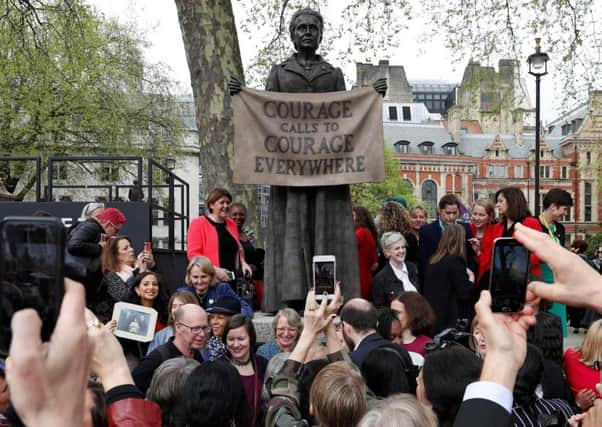Leader comment: Statues should not be set in stone


For centuries, Britain was a profoundly sexist place and so it is unsurprising that our most prominent monuments reflect this.
Happily, we have come to the realisation in recent decades that women and men are equally capable of doing most things. Women’s suffrage, the 1960s sexual revolution, the first female prime minister and women in the armed forces were all significant milestones on our journey towards a more enlightened society. However, looking down upon us from the patriarchal past, our statues have remained predominantly male, sending a message to new generations that is decidedly out-dated and one that most people fundamentally disagree with.
Advertisement
Hide AdAdvertisement
Hide AdSo campaigners have been making the case for new statues of women, such as the one of the suffragist Millicent Fawcett unveiled In London yesterday. At the ceremony, our second female Prime Minister, Theresa May, made clear Fawcett’s contribution to the UK: “I would not be standing here today as prime minister, no female MPs would have taken their seats in Parliament, none of us would have had the rights and protections we now enjoy, were it not for one truly great woman – Dame Millicent Garrett Fawcett.”
Put like that, the only question is, why did it take so long for the first statue of a woman in Parliament Square, alongside the likes of Nelson Mandela, Mahatma Gandhi and Sir Winston Churchill?
There is a similar picture in Scotland where our capital still has more statues of animals than named women. Anyone not embarassed by that stark statistic should be – it is hardly the kind of image we would want to project in the modern world.
A practical problem is there are only a limited number of prominent locations in our city centres for statues and many of them are currently occupied. So it is perhaps time for a reassessment to identify those figures who are still relevant and candidates to replace them. David Hume and Adam Smith should rest easy, but there are perhaps others whose achievements have slipped into the past and who may not have begrudged making way. We should not get rid of them, just find other spaces. Statues are meant to last, so it’s not a process that should happen often and decisions must be taken carefully. But just as our society has changed, so should its monuments.
